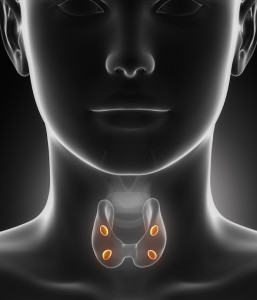 Hyperparathyroidism is most commonly due to adenomas or carcinomas. These can frequently be detected with dual phase Sestamibi scans. The sensitivity for detection is poor with planar and SPECT imaging (60-80%) but with the advent of SPECT-CT much higher sensitivities have been achieved (>85%). Multi-glandular disease is uncommon but paradoxically more difficult to detect with all modalities.
Hyperparathyroidism is most commonly due to adenomas or carcinomas. These can frequently be detected with dual phase Sestamibi scans. The sensitivity for detection is poor with planar and SPECT imaging (60-80%) but with the advent of SPECT-CT much higher sensitivities have been achieved (>85%). Multi-glandular disease is uncommon but paradoxically more difficult to detect with all modalities.
Now with the extra benefit of SPECT-CT sestamibi scans* small lesions at the lower threshold of resolution for technetium scanning can still be identified when there is a clear corresponding lesion seen on CT.
In the author’s experience the best accuracy results from SPECT-CT (now we using our own specialised uptake threshold mapping which can locate lesions with less uptake) followed by a targeted ultrasound done by the same person. This allows 3 modality assessment which has reduced the number of negative scans, increased the detections of small lesions, and increased the detection of multiglandular disease. An example of a parathyroid adenoma is seen here. See the parathyroid scan gallery below for more examples.
For those who have negative ultrasounds and SPECT-CT a 4D CT scan of the neck is the next choice (also available at Garran Medical Imaging).
For an overview on hyperparathyroidism and its imaging see an excellent medscape synopsis.
Iain Duncan.
* The CT component of the scan must be capable of sufficient resolution and many SPECT-CT scanners currently in use do not have sufficient resolution. The SPECT-CT scanners in Bega and at Garran Medical Imaging are ideal.
[Not a valid template]
